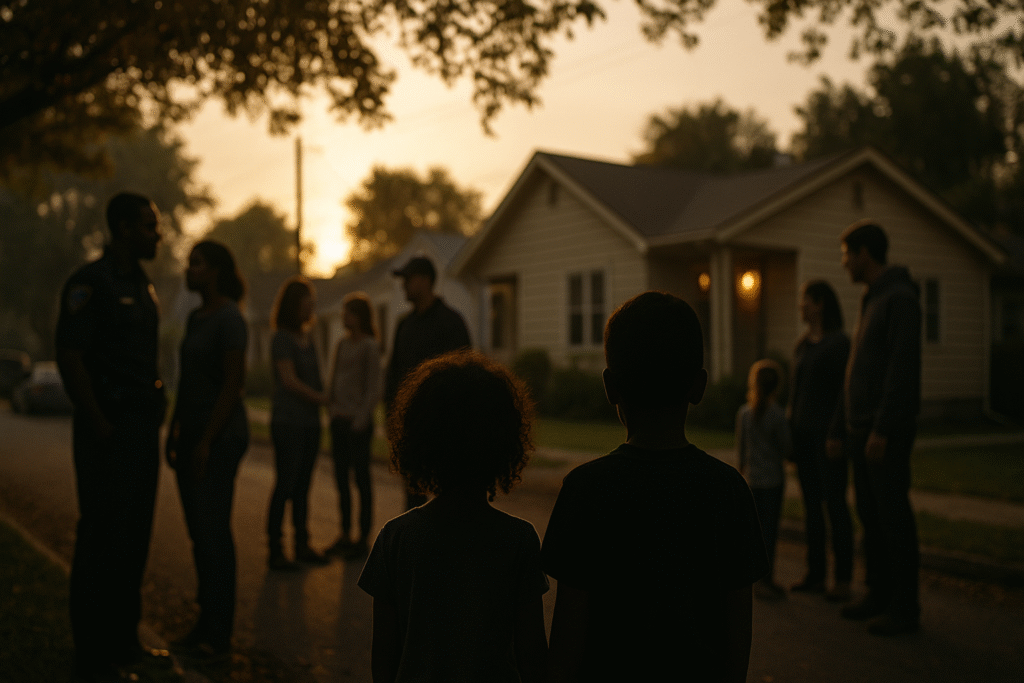Human trafficking and child exploitation are crises that strike at the core of our society, threatening the most vulnerable among us. Despite the countless efforts to pass laws, train law enforcement officers, and develop new technologies, meaningful progress remains frustratingly elusive. The hard truth is that waiting for external solutions – whether through legal reforms, technological breakthroughs, or additional resources for law enforcement – will not resolve these deeply rooted problems. These issues are too complex and widespread to be resolved by any single institution or solution. The responsibility to protect our children and communities ultimately falls on us—on parents, teachers, neighbors, and every member of our community.
The Reactive Nature of Law Enforcement
One of the biggest challenges in combatting human trafficking and child exploitation is the reactive nature of law enforcement. Police officers, prosecutors, and investigators are often brought into a situation only after the damage has already been done. Law enforcement is trained to investigate crimes, apprehend perpetrators, and bring them to justice, but, by the time they are involved, the trauma has already been inflicted, and the exploitation has already occurred. As a result, expecting that more police officers, tougher laws, or advanced technology will prevent these crimes is an unrealistic hope.
The role of law enforcement is crucial, but it is inherently limited. Law enforcement agencies often operate under overwhelming caseloads, limited resources, and an after-the-fact approach to addressing these crimes. No matter how well-trained or well-resourced they become, they can never be on the front lines of prevention. Prevention begins long before a crime is committed—in the homes, schools, and communities where children live, learn, and play.
Building an Ecosystem of Care
If we are to protect our children from predators and traffickers, we must build an ecosystem of care that involves every individual and every institution within a community. This ecosystem is not just about creating more services or expanding government programs; it also is about fostering a culture of innovation. It’s about fostering a culture of vigilance, compassion, and shared responsibility for the safety and well-being of the most vulnerable.
We often hear the phrase, “It takes a village to raise a child.” But, in reality, it takes much more than a village—it takes an interconnected network of individuals and organizations working together to create safe environments. Schools, churches, neighborhoods, and local businesses all play a critical role in building this ecosystem of care. Every person in a community must recognize that they have a responsibility in this fight, whether it’s a teacher noticing changes in a child’s behavior, a neighbor keeping an eye out for suspicious activity, or a parent monitoring their child’s online interactions.
This ecosystem also includes law enforcement, but they should be considered part of a larger safety net, not the primary solution. By the time police are involved, we’ve already failed. Our goal should be to create a system so robust that predators are identified and deterred well before they have the opportunity to cause harm.
Personal Vigilance in Trusted Spaces
One of the most alarming aspects of human trafficking and child exploitation is that these crimes are often perpetrated in spaces we assume are safe—our homes, schools, churches, and even within families. Predators don’t just lurk in dark alleys or isolated locations. They embed themselves in trusted environments where they can gain access to vulnerable children. We’ve seen time and again that predators can be teachers, coaches, religious leaders, and even family members.
This reality underscores the need for personal vigilance in every aspect of our lives. Parents must be actively engaged in their children’s activities and relationships, both online and offline. Schools and youth organizations must have policies to recognize and respond to potential exploitation. Neighbors and community members must learn to identify warning signs and speak up when something feels wrong. It is not enough to trust that someone else will notice or intervene. Each of us must be willing to step forward and protect those who cannot defend themselves.
A Call to Action: No More Passive Bystanders
The time for passive bystanding is over. We can no longer afford to wait for someone else to step up, whether it’s the government, law enforcement, or technology companies. If we continue to rely solely on external solutions, we will remain perpetually behind, reacting to the next crisis instead of preventing it. Every parent, teacher, neighbor, and community leader have a role in creating safe spaces for our children.
Action begins at the individual level. Parents must educate themselves about the risks their children face, particularly online, and take steps to mitigate those risks. Teachers and school administrators should receive training not just in academic instruction but in identifying and responding to signs of abuse and exploitation. Community organizations should offer resources and support for families, ensuring no child falls through the cracks. Neighbors must be willing to watch out for one another, recognizing that the safety of one child is the responsibility of all.
We must stop waiting for a savior—whether through new laws, more police officers, or technological advancements. No one is coming to save us. The responsibility lies with us, and it’s time to act. Only by building an ecosystem of care, fostering personal vigilance, and stepping up as proactive protectors can we create communities where our children are truly safe.
In this fight, we cannot be passive. We cannot be silent. And we cannot wait. It’s up to us.
The Department of Homeland Security and Homeland Security Investigations (HSI) provide the following programs to help educate children, teens, parents, trusted adults and educators with crucial information to keep kids safe:

